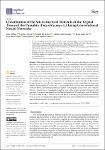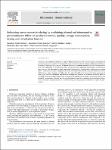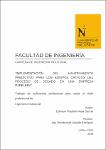Mostrar el registro sencillo del ítem
Classification of the microstructural elements of the vegetal tissue of the pumpkin (Cucurbita pepo l.) using convolutional neural networks
| dc.contributor.author | Oblitas, Jimy | |
| dc.contributor.author | Mejia, Jezreel | |
| dc.contributor.author | De la Torre, Miguel | |
| dc.contributor.author | Avila George, Himer | |
| dc.contributor.author | Seguí Gil, Lucía | |
| dc.contributor.author | Mayor López, Luis | |
| dc.contributor.author | Ibarz, Albert | |
| dc.contributor.author | Castro, Wilson | |
| dc.date.accessioned | 2021-06-04T16:08:48Z | |
| dc.date.available | 2021-06-04T16:08:48Z | |
| dc.date.issued | 2021-02-10 | |
| dc.identifier.citation | Oblitas, J. ...[et al]. (2021). Classification of the microstructural elements of the vegetal tissue of the pumpkin (Cucurbita pepo l.) using convolutional neural networks. Applied Sciences (Switzerland), 11(4). https://doi.org/10.3390/app11041581 | es_PE |
| dc.identifier.uri | https://hdl.handle.net/11537/26699 | |
| dc.description.abstract | ABSTRACT Althoughknowledgeofthemicrostructureoffoodofvegetaloriginhelpsustounderstand the behavior of food materials, the variability in the microstructural elements complicates this analysis. In this regard, the construction of learning models that represent the actual microstructures of the tissue is important to extract relevant information and advance in the comprehension of such behavior. Consequently, the objective of this research is to compare two machine learning techniques—Convolutional Neural Networks (CNN) and Radial Basis Neural Networks (RBNN)— when used to enhance its microstructural analysis. Two main contributions can be highlighted from this research. First, a method is proposed to automatically analyze the microstructural elements of vegetal tissue; and second, a comparison was conducted to select a classifier to discriminate between tissue structures. For the comparison, a database of microstructural elements images was obtained from pumpkin (Cucurbitapepo L.) micrographs. Two classifiers were implemented using CNN and RBNN, and statistical performance metrics were computed using a 5-fold cross-validation scheme. This process was repeated one hundred times with a random selection of images in each repetition. ThecomparisonshowedthattheclassifiersbasedonCNNproducedabetterfit,obtaining F1–score average of 89.42% in front of 83.83% for RBNN. In this study, the performance of classifiers based on CNN was significantly higher compared to those based on RBNN in the discrimination of microstructural elements of vegetable foods. | es_PE |
| dc.format | application/pdf | es_PE |
| dc.language.iso | eng | es_PE |
| dc.publisher | Multidisciplinary Digital Publishing Institute | es_PE |
| dc.rights | info:eu-repo/semantics/openAccess | es_PE |
| dc.rights | Atribución-NoComercial-CompartirIgual 3.0 Estados Unidos de América | * |
| dc.rights.uri | https://creativecommons.org/licenses/by-nc-sa/3.0/us/ | * |
| dc.source | Universidad Privada del Norte | es_PE |
| dc.source | Repositorio Institucional - UPN | es_PE |
| dc.subject | Plantas | es_PE |
| dc.subject | Procesamiento de imágenes | es_PE |
| dc.subject | Análisis de los alimentos | es_PE |
| dc.title | Classification of the microstructural elements of the vegetal tissue of the pumpkin (Cucurbita pepo l.) using convolutional neural networks | es_PE |
| dc.type | info:eu-repo/semantics/article | es_PE |
| dc.publisher.country | CH | es_PE |
| dc.identifier.journal | Applied Sciences (Switzerland) | es_PE |
| dc.subject.ocde | https://purl.org/pe-repo/ocde/ford#2.11.04 | es_PE |
| dc.description.sede | Cajamarca | es_PE |
| dc.identifier.doi | https://doi.org/10.3390/app11041581 |






